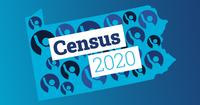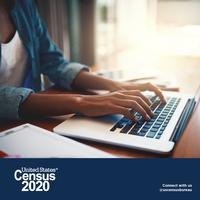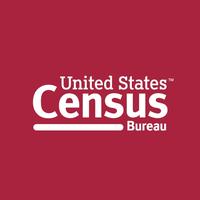There is a good chance that you have heard about the 2020 Census in the past year, either through news outlets and advertisements or by attending a program. Well, the time is nigh. Starting March 12, the U.S. Census Bureau began distributing invitations to households through the U.S. Mail that will provide you with information on how you can participate. Here’s what you need to know:
Who will be counted?
The U.S. Census counts the population in all 50 states, the District of Columbia, and five U.S. territories (American Samoa, the Commonwealth of the Northern Mariana Islands, Guam, Puerto Rico, and the U.S. Virgin Islands).
This is the 24th time the census has been collected, but it is the first time you will have the option to complete it online.
The U.S. Census has been conducted every ten years, since 1790, as per Article 1, Section 2, Clause 3 of the U.S. Constitution.
The 2020 Census invitation letter that you will receive in the mail from the U.S. Census Bureau will ask you to respond to a short questionnaire online, by telephone, or by mail. If you choose to respond either online or by phone, you will need to use the Census ID that is provided within this letter to access and respond to the questionnaire.
By responding online or by telephone, you have the option of accessing the questionnaire in one of thirteen languages: Arabic, Chinese, English, French, Haitian Creole, Japanese, Korean, Polish, Portuguese, Russian, Spanish, Tagalog, and Vietnamese.
If you are unable to respond to the first invitation, two additional reminder letters will be sent out during the weeks of March 16-24, 2020 and March 26-April 3, 2020.
Alternatively, if you prefer to mail in your response via a paper form, paper questionnaires will be sent out to households who have not responded during the weeks of April 8-April 16, 2020.
If you are unable to respond after the third mailing, you will receive a fourth reminder letter, with a follow-up in-person visit by an enumerator from the U.S. Census Bureau. In-person visits will take place from May through July.
Your information is protected regardless of how you respond.
The U.S. Census Bureau is bound by federal law, Title 13 of the U.S. Code, to safeguard your responses and keep them confidential for seventy-two years (P.L. 95-416).
Under Title 13, the data collected from the Census questionnaire is used for statistical purposes only. Individual responses cannot be used against you, your household, or business by any government agency or court. As well, U.S. Census Bureau employees and contractors are sworn for life to always protect your personal information. A violation to this oath carries significant penalties, including fines up to $250,000 and/or up to five years in prison.
As well, the IT infrastructure and security controls developed for the online questionnaire utilize industry best practices and federal regulatory requirements for data protection against cyberthreats.
What questions will be asked on the 2020 Census questionnaire?
Those individuals who may remember the long-form Census questionnaire, need never fear. The 2020 Census questionnaire is a short-form, with only nine questions.
The questionnaire will ask you information about your household and the people living in it: the relationship of the household member, gender, race, age, ethnic group, and whether the home is owned or rented. You will also be asked to provide a telephone number in the event that you may need to be contacted by the U.S. Census Bureau for official business related to your questionnaire responses.
The 2020 Census questionnaire will not ask you about your citizenship status, as ruled by the U.S. Supreme Court on June 27, 2019.
You are encouraged by the U.S. Census Bureau to fill out the questionnaire completely, though your response will still be valid with a partial submission. However, if you do not complete the questionnaire in its entirety, you may receive a follow-up phone call or in-person visit from an enumerator from the U.S. Census Bureau.
How can I ensure that my responses are accurate?
All of your responses to the 2020 Census questionnaire should be answered based upon the reference date April 1, 2020. This means, your responses would depend upon who is living within your household on April 1, 2020.
There are a number of special circumstances that you may need to consider as you respond to the questionnaire, for example, how to count newborns, people who move to a new residence on April 1, visitors to your home, students living in dormitories, U.S. military personnel, individuals displaced due to natural disasters, individuals in health care or correctional facilities. If you are unsure how to count a member of your household, the U.S. Census Bureau has provided a public reference guide to help you identify who to count.
How can I recognize an enumerator and avoid scams?
Employees of the U.S. Census Bureau will always carry federal photo ID badges with a U.S. Department of Commerce watermark and expiration date, as well as briefcases and equipment indicating their affiliation with the Bureau. When visiting a house or group home, the census enumerator will display their ID and explain the purpose of their visit. Individuals can also ask the enumerator for a picture ID from another source to confirm their identity.
When submitting responses to an online or mailed questionnaire for the 2020 Census, the U.S. Census Bureau will never ask for your Social Security, bank account or credit card numbers, or try to solicit money or donations. As well, the Census Bureau will not contact you on behalf of a political party or ask you questions pertaining to your political party affiliation.
If you suspect fraud or a scam, you can contact your Regional Census Center to speak with a Census Bureau representative. The telephone number of the Philadelphia Regional Census Center is 267-780-2600.
When will the numerical data collected be available for use?
Data from the 2020 Census will be collected through July 2020.
On December 31, 2020, the U.S. Census Bureau will deliver apportionment counts, based upon the recorded population changes from the 2020 Census, to the President and Congress. By March 31, 2021, the Census Bureau will send these redistricting counts to the states to assist them in redrawing their legislative districts. The population changes recorded could mean that you may have more or less seats in the U.S. House of Representatives within your state.
Additional statistics collected from the 2020 Census will be released by July 2021 on the Census Bureau’s new data platform data.census.gov. Those familiar with using American Factfinder should note that the site will be retired on March 31, 2020.
Why is my response to the 2020 Census important?
Besides having a direct impact upon your local representation in Congress, the data collected from the 2020 Census will inform decisions about the allocation of federal funding to your community for essential programs and services, including funding for new roads, clinics, health services and education. Your response matters!
Have a question for Free Library staff? Please submit it to our Ask a Librarian page and receive a response within two business days.



